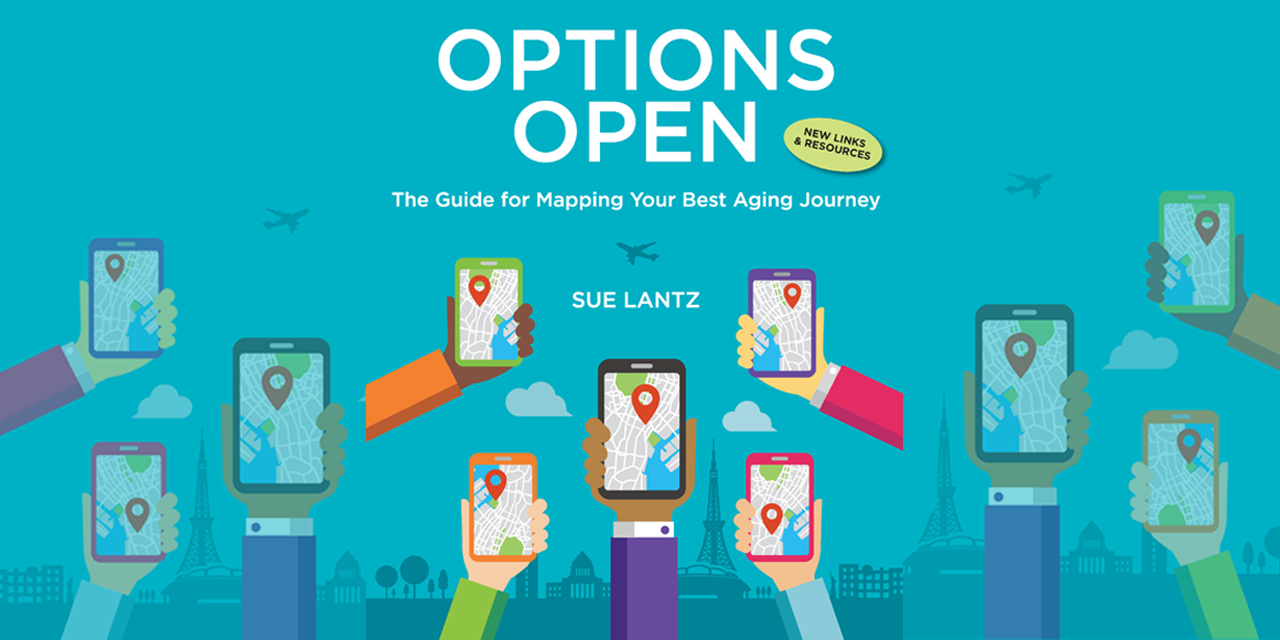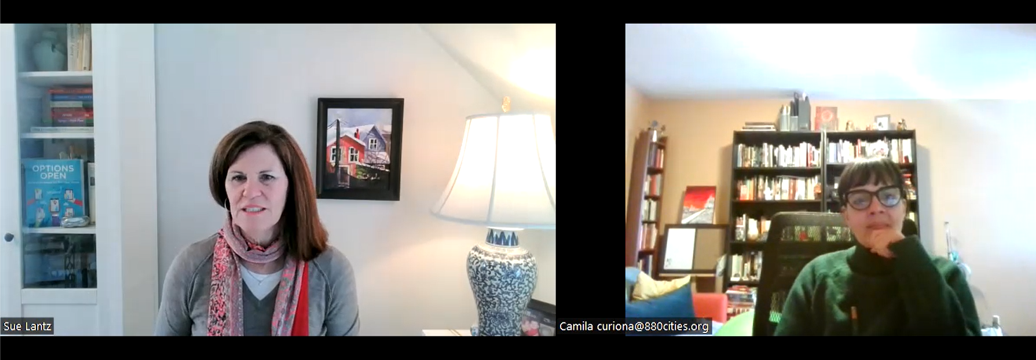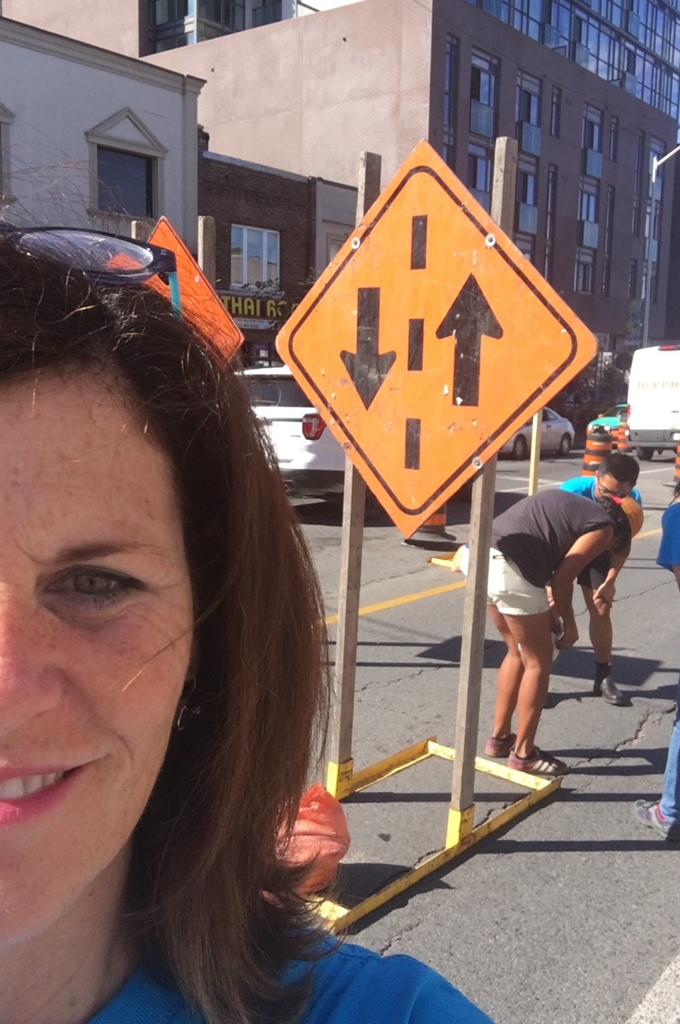
27 Oct 8 Questions With 8 80 Cities: In Conversation With Sue Lantz On Aging In Place
In 8 Questions, 8 80 Cities asks people with specific insights and expertise on topics related to our mission of creating better cities for all. We ask them about their passions and their history and points of view. And then, we ask them to suggest a question for our next interviewee.
8 80 Cities Manager of Communications and Administration, Camila Uriona, spoke to Sue Lantz, BA, MPA an expert in successful “aging in place” including healthcare, housing, and caregiving. Sue is passionate about creative solutions for aging that are meaningful to the individual, empowering and practical. She is an expert in preparing and supporting caregivers as crucial partners in the care process. Sue has established effective relationships with various organizations and stakeholders in the community, healthcare sector, and housing. She is the author of the guidebook “Options Open: The Guide for Mapping Your Best Aging Journey” and currently serves on the board of 8 80 Cities.
Sue, tell us about your work at Collaborative Aging.
My work at Collaborative Aging combines policy advocacy, educational materials and workshops, and innovative design – within the field of aging in place. We help create new types of housing, home care, community care, and navigational solutions that support people as they age and their caregivers. We also help people to establish balanced and healthy caregiving arrangements. To further our educative work, I created a user-friendly guidebook called Options Open: The Guide for Mapping Your Best Aging Journey.
Currently, there are very few options for the rapidly increasing number of aging boomers who want to age in their cities or towns. The main options are either segregated housing and care settings like “retirement homes” or institutional long-term care homes (or nursing homes). To provide more options, we need adaptable and socially designed housing and significantly better home and community care. We also do not have the proper tools and resources to help people navigate and make the appropriate arrangements for successful aging within their communities. Collaborative Aging addresses these needs by working with others to develop creative solutions that enable older adults to maintain as much choice and control as possible.

Sue Lantz and Camila Uriona
How did you get interested in the topic of solutions for aging in place, particularly in Cities?
My interest in creative options began early in my career when I worked on innovative new projects that uniquely combined the right housing with self-directed care, to enable young people with physical disabilities to live a normal life, such as going to school, getting a job, establishing relationships, and contributing to their community – versus living in institutions.
We collaborated with many young people who wanted to return to living in the community after being in a rehabilitation or chronic care hospital. We established a grassroots movement to create more innovative housing and self-directed care models here in Canada while being part of a global organization based in the UK called, the Cheshire Homes Foundation (now named Cheshire). These supportive housing projects and consumer-directed care models are still valuable and relevant today.
While working with Cheshire, on a personal level, I played the role of family caregiver for my aging grandparents. They lived in a downtown neighbourhood in Toronto, across from a park, with stores and amenities within a walkable distance. They cultivated close relationships with their neighbours and a strong sense of belonging to their community.
Over a few years, my grandparents intentionally took the necessary steps to prepare and modify their home, if their mobility might change – which it did. They also had conversations with all of us – their family caregivers about their wishes and plans. So, we were prepared as a team to help them, when they needed support, and care in the home.
Over time, I began understanding the wisdom of my grandparents’ actions. They were preparing themselves (and us) in ways that allowed them to stay a part of a city and community they loved, well into their nineties. Their empowering and compassionate “model” of leading their aging along with a team of caregivers, has shaped my work in so many ways.
That story is inspiring. What is your vision for the work you are currently doing?
When you boil it down, my vision of aging in the community comes down to four key things:
-
- individual and community leadership
- self-navigation and advocacy
- informed choices and preparations for later life transitions
- adequate housing, community care, and social networks that enable healthy and connected aging and caregiving
My vision is informed by what I hear my peers (people in our 60s) say about what they want now, and in the future – to remain healthy and vital parts of their community with support. And I believe that cities, towns and community groups in Canada and worldwide, can do much more to “get ready” for the growing aging population. We can do so by creating a much broader range of housing, community care, technology resources and become more creative in how we design and use our public spaces such as parks, town squares, gardens, streets, and so on.
To make this vision possible, we need to put the building blocks together including, the right types of housing, better care in the community, smart technologies, and caring and resilient communities within cities and towns.
Let’s hear more about the five strategies mentioned in the Open Options guide and why they are essential when considering aging in place.
The Options Open Guide introduces readers to five key strategies – or areas of your life – that you need to use to arrange your best later life experience proactively. The five strategies are 1) your health, 2) your housing, 3) your social network, 4) your caregiving team, and 5) your resources. The Options Open Guide provides ideas and tools to help readers start contemplating their vision and model for later life. It helps people identify their priorities, make informed plans and timely decisions, and arrange for their aging in the right places with the right support.
The Five Strategies have been informed by the best evidence, including the 8 domains within the Age-Friendly Community Planning Framework set out by the World Health Organization (WHO). These five strategies help people understand how making choices in these critical aspects of life inter-relate and affect later life experiences. With that understanding and information, it is possible to become more intentional and proactive about reducing known risks and planning with foresight about the future.
It is essential to see aging as part of the life journey and be open to the idea of becoming more prepared, versus reacting and waiting for a crisis. Fundamentally, my goal is to change people’s attitudes toward later life to approach it from a more positive and proactive perspective. In viewing aging as a natural life stage, we can also seek opportunities to situate ourselves for better experiences. Alternatively, when people avoid the idea of aging, they often end up in crises which means making important decisions about housing and care in a hurry and in distress, which means fewer choices. These types of hardships are something we can prevent with the right actions.

Sue taking a break from working on the floor painting. 8 80 Streets Danforth.
How can older adults play a more active role in developing cities and communities?
I believe that older adults have a great deal to contribute to our neighbourhoods, communities and cities. There is a tremendous opportunity for older adults to contribute their skills, knowledge and talents and bring benefits to all generations. Through collaborative efforts, we can improve the quality of our social connections and supportive networks within neighbourhoods. And, given the pressing need for more housing in Canada, we work at the local level to expand the housing options that are socially-designed, accessible, affordable, and environmentally sustainable.
How can policymakers in Cities better incorporate the expected life changes of this growing number of older adults and their caregivers?
I see various ways to incorporate changes in our cities’ policies and operations. For example, in serving the City of Toronto’s Senior Strategy 2.0 Table, the issues that come up frequently are accessibility of the transit system, the accessibility of park spaces and benches to sit on, accessibility of transportation systems or washrooms to use in public spaces, and street safety. Yet, in my view, one of the most critical pieces is universally designed housing that is affordable and inclusive. Housing must be adaptable to the transitions of life and allow for care to be brought into the home.
As urbanist Jane Jacobs wisely said, “you shouldn’t have to move as your circumstances evolve”. In considering the adaptability of housing, we need to recognize that it is not only physical but also financial. Many older Canadians live on fixed incomes that are just above the poverty line.
Furthermore, with housing being precarious with rents rising, it’s understandable why more older adults are facing housing insecurity and potential homelessness. Advocates for older adults are speaking out about the importance of adequate government-guaranteed income to ensure housing security and health.
We need to focus on increasing the supply and range of housing options. And cities are responsible for approving new housing developments and their design. Better zoning and plans allow the expansion of creative housing options. For example, in Toronto, we have new zoning rules around Laneway Housing and Garden Suites. This could offer older adults (or families, or paid caregivers) a new housing option. The City of Toronto offers rebates or financing support to generate this type of housing, particularly for new rental housing units. So, there is a real opportunity for innovation here.
What would you say is the role of aging populations today in our community, city, and country?
Older adults play a significant role in the economy and our communities. In addition to economic contributions (either via consuming goods and services, or productive work), they also can lead civic and community initiatives. In addition, many older adults are major sources of donations to charities and volunteerism. In this way, they are making social contributions to cities and communities in terms of social well-being, arts and culture, and environmental sustainability. 8 80 Cities is a key organization helping people of all ages to take the lead on improving or transforming public spaces (or “Place Making”) to increase the value and impacts (e.g economic, social, and environmental) of these spaces.
In this blog series, we ask a question from our last interviewee. Our latest guest asked: If you could make one change in our society, what would it be?
We need to change fundamentally change how our society views aging – to overcome ageism and move towards a positive view of one’s journey in later life. Our societal view is incredibly negative, fearful, and resistive about aging. This sets up a negative experience with getting older. If we start from this negative attitude, this ageism towards ourselves creates significant barriers to proactive planning and decision-making.
If society were more accepting of aging as a positive experience, more people would “lean forward” with self-compassion and be willing to arrange better experiences and outcomes for ourselves. If more of us want to lead and create better experiences in later life, this will also require municipal, provincial and federal policy, legislative change and creative funding programs and services.
What is your question for our next interviewee?
In a post-COVID world, as more employees work remotely, there are more vacant office buildings. So, how can cities revitalize their downtown areas, including becoming more “ready” for the rapidly growing aging population?



